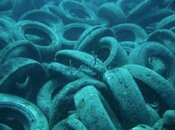- Messages
- 16,438
- Reaction score
- 5,241
- # of dives
- 1000 - 2499
The ads in dive magazines and on SB aren't dying, that's for sure. I've only dived down there once, and it was pretty good, but I've no past to compare it to. In the US I have seen only 1 shop close, while all others I frequent seem to thrive (well, I don't count that one in the northeast where word of mouth was it closed due to drug trafficking).





